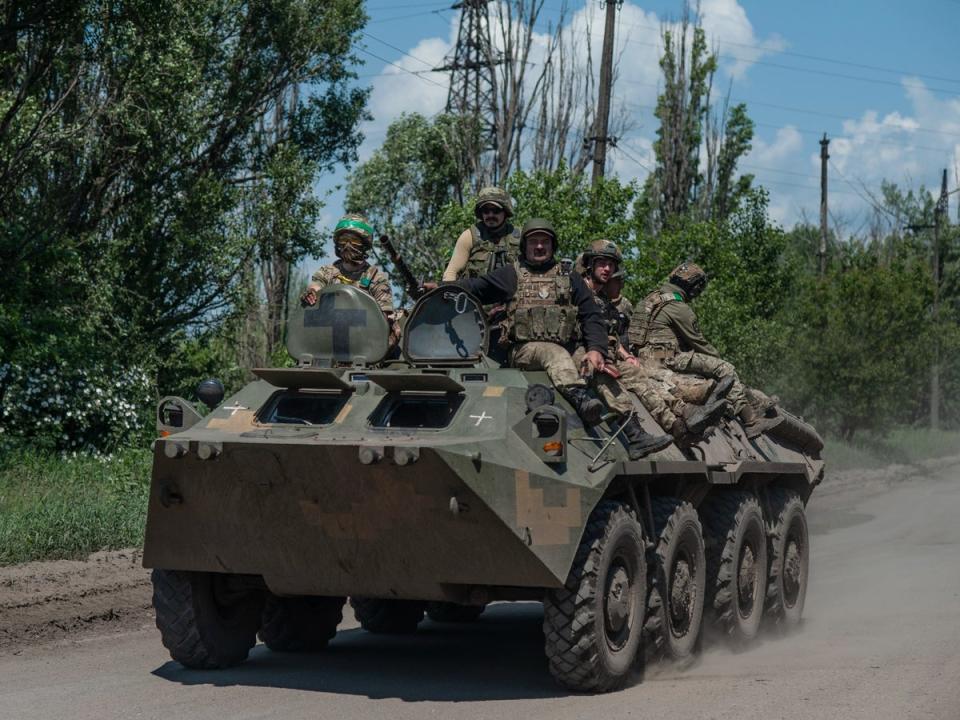Ukraine on manoeuvres in its counterpunch against Russia: ‘This is our big shot we can’t screw it up’

The blowing up of the Nova Kakhovka dam will delay an expected armoured thrust in the area by Ukrainian forces, but military action in the preliminary stages of Kyiv's counteroffensive continues across the frontline.
The route along the dam near Kherson was one the Ukrainians would have taken to move armour – like tanks – and heavy equipment. There were also plans for landings on islands downstream, where fierce clashes have been taking place for some time. The submerging of these pathways means that tactics are redrawn and troops and weapons repositioned.
But Ukrainian forces, including marines, are continuing unaffected with cautious advances on both the southern and eastern frontline in small numbers. The operations are taking place largely without artillery and armoured support, and appear to be testing Russian defences to probe for weaknesses.
Despite Moscow’s claims to have destroyed advanced Western tanks, there is no evidence of large numbers of German Leopards or British Challengers as yet being deployed. The newly-formed brigades armed with them are being held back outside Russian artillery range, shielded by triple-A (anti-aircraft artillery) from drones, warplanes and missiles.
The focus of the Ukrainian probes are in the Zaporizhzhia and Donetsk regions, where they have advanced as far as possible – only turning back, on a number of occasions, when coming under fire. This is being portrayed in the Kremlin-backed media as the Ukrainian counteroffensive failing.
Some Russian commanders are, however, beginning to see an emerging pattern, signalling a new set of evolving tactics. Alexander Khodakovsky, commander of the paramilitary Vostok Battalion, wrote on Telegram: “Instead of an armoured herd in numbers exceeding the number of the defenders [Russian forces] of Novodonetske, the enemy dashes on light armour as close as possible to the village, dismounts the infantry intended for the assault and then the light armour returns for a new batch”.
After dropping off the troops, the armoured personnel carriers retreat and provide fire support. The soldiers, or marines, then fan out, making themselves harder for artillery to hit, gather intelligence, inflict enemy casualties when possible and then fall back.
Conducting such sorties in small numbers means a number of missions can be mounted in a comparatively short time, say Ukrainian commanders, finding out weaknesses while, it is hoped, tiring out Russian forces ahead of major operations get underway.
Ukraine’s 37th Marine Brigade seem to have been particularly active. The brigade is at full strength, at around 2,000 strong, and have been carrying out sorties on American M-ATV armoured trucks and French Amx-10RC reconnaissance vehicles.
On Sunday the Kremlin announced that a “large-scale offensive” by the Ukrainians in the Donetsk oblast had been repulsed. Video was produced purporting to show vehicles in a field under heavy fire. More than 300 troops had been killed and 16 tanks destroyed, claimed the Russians.
Sergei Shoigu, the Russian defence minister, later updated enemy losses to “3,715 troops, 52 tanks, 207 armoured fighting vehicles, 134 motor vehicles, five aircraft, two helicopters, 48 pieces of field artillery, and 53 unmanned aerial vehicles”. Kyiv dismissed the claims, and they have also been rubbished by Yevgeny Prigozhin, the head of the mercenary Wagner Group, who has become a trenchant critic of the Russian high command saying they were “wild and absurd fantasies, works of science fiction”.
Moscow pointed to the Ukrainian 23rd and 31st mechanised brigades as those who took part in what it termed “the battle of Donetsk”. But neither of these are among the brigades that have been armed with the latest Nato weapons to carry out the main assault.
After stating for months that it will not make any public statements on the offensive, Oleksiy Danilov, secretary of national security and defence council, said on Wednesday: “When all this will begin, it will be decided by our military. When we start the counteroffensive, everyone will know about it, they will see it.”
One senior Ukrainian security official said: “We have had journalists, even Nato officials asking ‘are you going to start it on the anniversary of D-Day [6 June]. We told them that, unfortunately, reality has to take precedence over symbolism. We have to get every preparation right, align everything. This is our big shot, we can’t screw it up.”

 Yahoo Sport
Yahoo Sport 





































